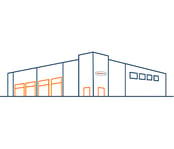Misplaced or lost warehouse inventory is preventable, as are the associated costs, which can be substantial. Not only does searching for inventory interrupt your efficient warehouse and supply chain operations, but missing items can cause stock-outs that result in lost revenue and even lost customers. Plus, if that inventory finally turns up days, weeks or months after it’s needed, you might be left with products that have lost much or all of their value.
In the real world, a single lost product isn’t necessarily a cause for great concern. However, if your system isn’t recognizing that certain items or certain locations are experiencing repeated exceptions, it can have significant operational, financial and labor cost implications. Inventory exceptions are generally caused by flawed operational processes and inadequate training. It’s critical to prepare the warehouse team for success. Start by demonstrating how each individual’s actions are critical to operational efficiency.
“Scan what you carry and carry what you scan”
Associates who don’t understand this simple motto might not be diligent when scanning inbound inventory, thinking that a few missed scans won’t cause any significant problems. Teams that fully embrace the critical need for accurate scanning will contribute to:
- Reduced inventory errors and research time
- Financial asset protection
- Faster and more accurate order fill
Key Aspects of Inventory Control
Effective warehouse management starts with proactive monitoring and maintenance of inbound goods inventory. The inventory team must be trained to properly perform the following tasks:
- Cycle counts
- Daily error/adjustment reviews
- Root cause analyses
In essence, a cycle count program “measures” the inventory integrity of an operation. A cycle count program is typically established to count a subset of inventory in specific locations, on specific days, on a recurring schedule, and to also count the entire building’s inventory on a regular basis.
Levels of acceptable and unacceptable variance should be established. For example, in an inventory of 10,000 units, a discrepancy of one unit is probably insufficient to trigger another cycle count, while a variance of 500 units is worth the labor.
Dollar value can be another measure to trigger recounts.
Reviews of any and all adjustments made must be completed to confirm their accuracy. Ideally, a member of the inventory team runs a daily report that shows all the adjustments made on the previous day including cycle counts, damages, receipt variances, and etc. For any adjustment that was unexpected—or that exceeds a certain threshold—a cycle count should be triggered to find the offsetting inventory variance.
Though this process will address single larger adjustments, it could potentially miss multiple adjustments that are individually under the threshold. When summed together they might be over that level. To identify these multiple adjustments, run data covering a longer time to review for trends as a whole, as the smaller adjustments may all offset. Then, cycle count any items that still have variances over the threshold to reconcile them.
Trends to watch for include continual adjustments at a certain location/zone or for a particular item or item type. These trends can indicate a process problem with inbound put away or picking.
Though cycle counts and daily error/adjustment reviews lead to quick fixes, they should not be relied on as long-term solutions. Inventory errors will keep happening if nothing is done to address their root cause in the system. Root cause analyses are needed when exceptions are frequent. Of the many root cause analysis methods, the “Five Whys” approach is effective. This works because most workers want to follow correct procedures, and this provides a logical means to achieve an optimal result.
The Five Whys
This approach simply requires that system problems be analyzed by asking basic questions. For example, if you continuously identify that a pallet is missing in your counts, ask:
Why is the pallet missing? It's in a different location than the inventory indicates.
Why was it physically in the different location? It’s in a different aisle, but the inventory is showing the expected slot.
Why was the wrong aisle associated to the pallet? The location barcode was faded on the label and the scanner wasn’t able to read it.
Why was the location barcode faded? The wrong label type was used to previously fix the location’s label.
Why was the wrong label used? The label type required is not available to complete in-house. The supplier ran out of on-hand inventory, and a new supplier is needed.
In this instance, pallets are not in their correct location because someone used the wrong type of label, not intended for location labeling. As a result, the label faded and couldn’t be scanned. A new process needs to be established to make sure the correct label type gets applied in the future.
The other main source of errors: improper training.
When a training issue is identified through the Five Whys process, it should be addressed through operational education. Associates should be taught the “why” behind the process to understand that the steps are important. With that knowledge, most associates will want to accurately complete the process so that there is value in the task being accomplished.
Document these processes and certify the associate when training is complete. This will provide a solid basis for coaching if a trained individual creates variances to the process.
These progressive steps for efficient and effective inventory control support continuous improvement in the warehouse management process. When a gap in the process is revealed, collaborate with warehouse teams to make improvements in as many aspects as possible, placing inventory integrity at the core.
The result will be a significant reduction in the number of times a customer—or internal team member—must pose that dreaded question: “Where’s my item?” At the same time, it will support many positive improvements including increased warehouse efficiency, improved financial results and—at the heart of it all—more satisfied and loyal customers.
Source: https://www.sdcexec.com/warehousing/article/22471594/odw-logistics-inc-wheres-my-item-why-inventory-control-matters










.png)

